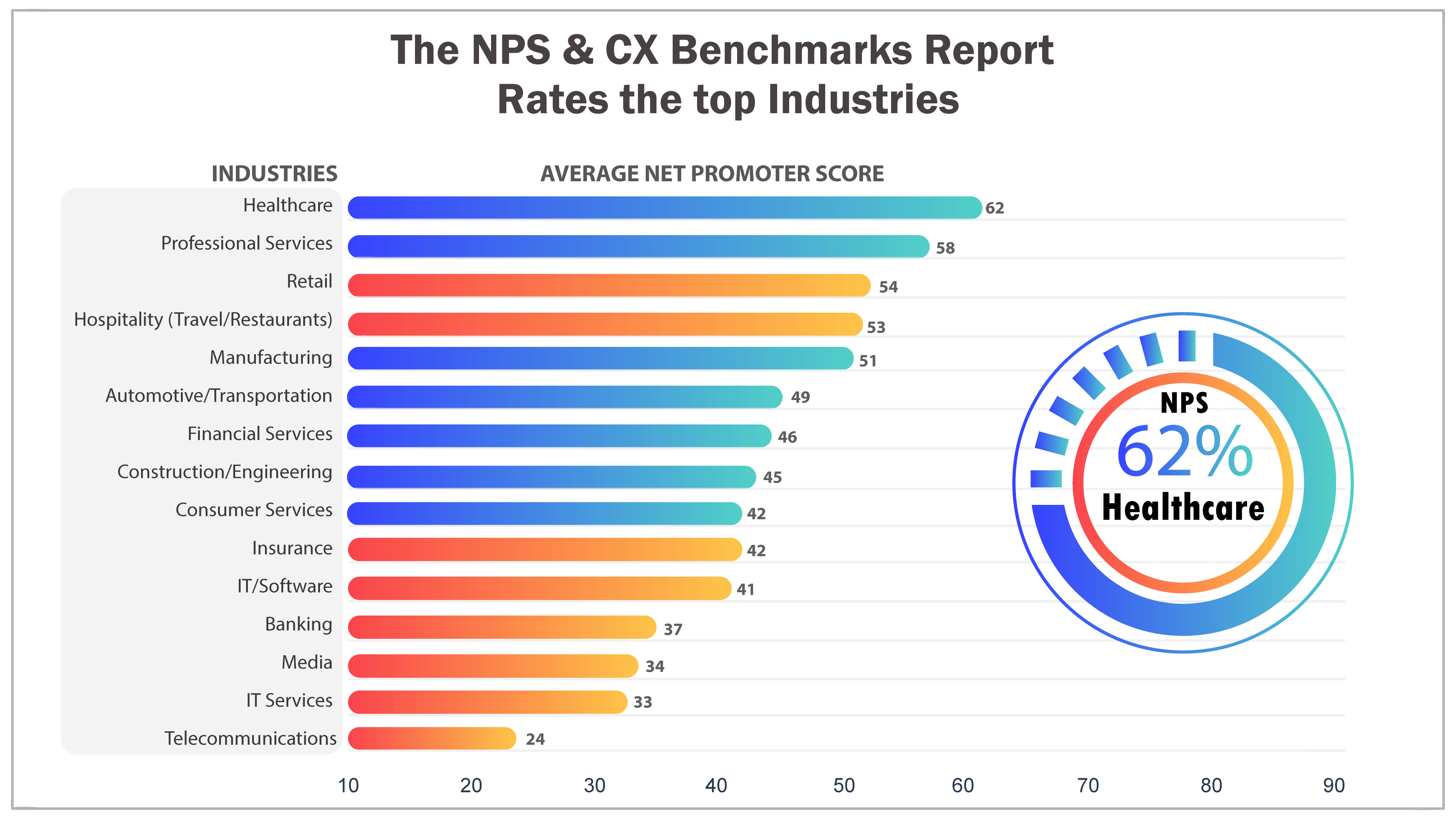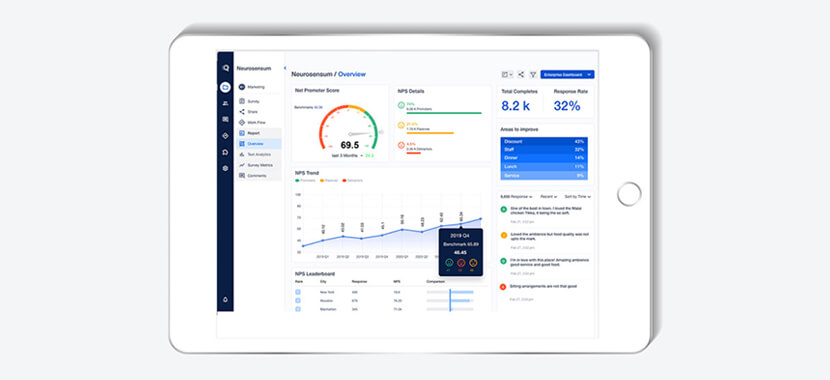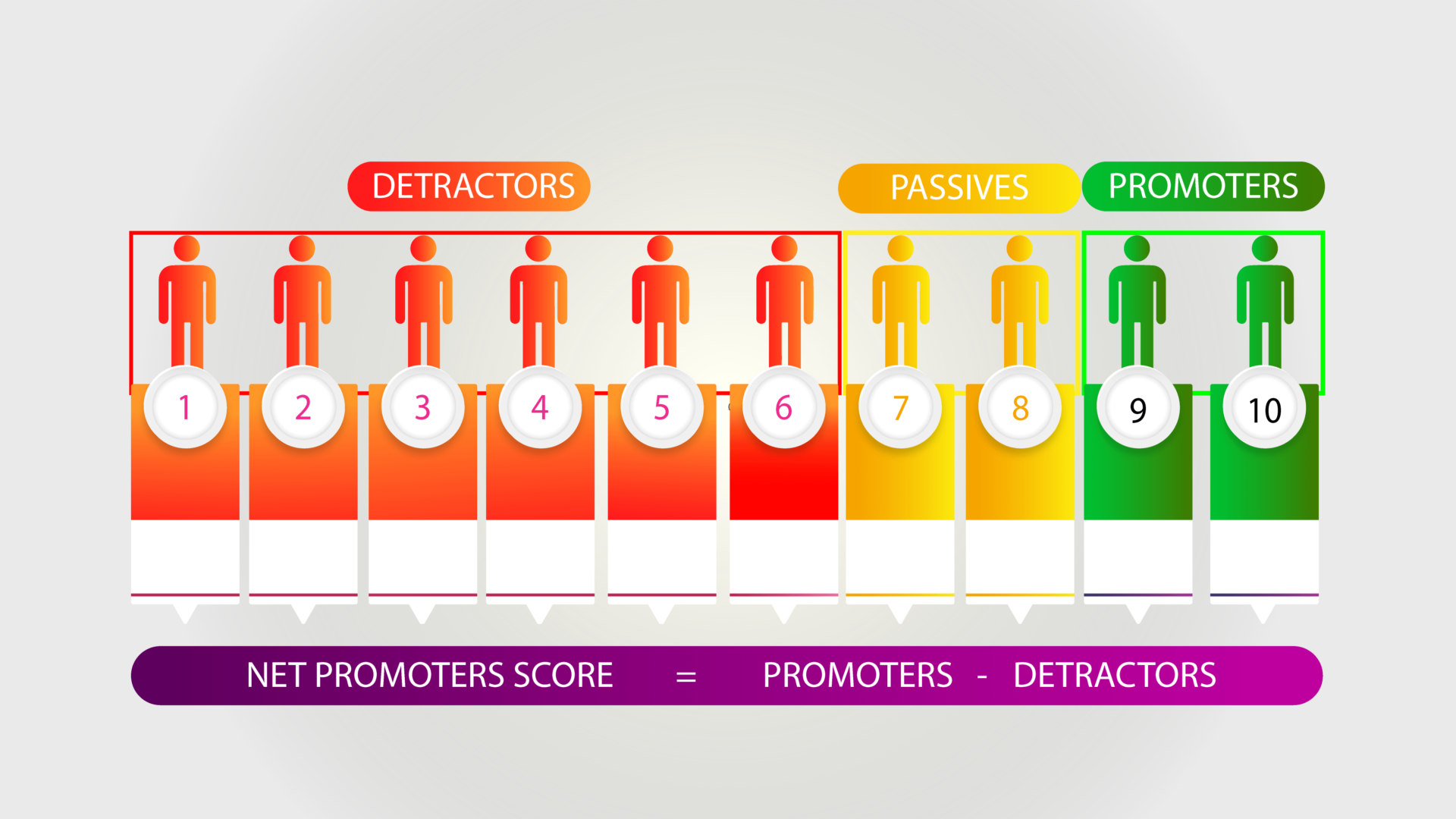
Did you know that Tesla’s Net Promoter Score is a whopping 96! Net Promoter Score (NPS) measures the willingness of a customer to recommend your company’s products or services to their friends and family. It means almost every Tesla customer would recommend it to everyone they know.
More importantly, these customers will stay with Tesla and there are high chances that the next car they will purchase would also be a Tesla. These customers will be easier to upsell or cross-sell too because they love Tesla, which is why their NPS score is high.
Apple’s NPS score in 2017 was 72 which decreased to 63 in 2018. Guess what? Even with the decline in the NPS score in 2018, Apple was still the NPS leader in the Laptop Computers category.
Why does Apple have a great NPS score? Because of their dogged focus on delivering great products, exceptional customer service. For example, they replace their products if it doesn’t work as intended during the warranty period.
The NPS & CX Benchmarks report rates the top industries that are known for keeping its customers valued and satisfied with its average NPS score. Here is how the industries fared:
The worst performer was the telecommunication industry with an NPS score of 24 while Healthcare was the clear winner with 62.
Please find a breakdown of the scores below:

Studies say that the telecommunication industry is trying its best to better its score.
In fact, the survey states that after using NPS to survey the satisfaction of its customers, they have managed to increase the average score from 11 to 24.
They have shown 2X improvement, and that’s incredible. It was only possible because they had their NPS score with them which was used as NPS benchmark to improve themselves.
Why you should not Ignore NPS?
If your business has higher NPS vis-a-vis your competitors, it means you are able to retain your customers better than your competitors do. Your customer retention rate is so pivotal to the existence of your business.
The founder of NPS, Fred Reichheld has clearly shown that even a 5% increase in retention rate means a profit increase of 25-90% for businesses. Why? Because existing customers buy more.
Here are 10 strong reasons so that you do not slack on calculating your business’ Net Promoter Score:
#1 Simple feedback:
There is nothing complex about the NPS question that you pose to your customer. You give them a simple scale of 0-10 to choose from. The key aspect is “How likely are they to recommend.”
This metric can be tracked week-on-week and month-on-month so that you can be on top of the numbers. Most of the other feedback mechanisms can be complex for the average user. NPS asks a straightforward question whose answers are even simpler.
John Waldmann, the founder of Homebase, an employee scheduling software, adopted NPS early to track customer’s feedback. They used it as a channel of communication between the company and its users.
They have even integrated NPS surveys into their software. The NPS feedback is relayed to their team weekly to take care of issues, this keeps the product team on their toes.
#2 Retention Rate:
Having loyal customers is the hallmark of any successful brand. Measuring the loyalty of your customers is what NPS does best. The way your customers perceive your brand is important for you to take business decisions.
Apart from the NPS score, the comments that you get from users should assist you in working on your product and keeping your existing customers happy.
In the Satmetrix Customer Net Promoter Benchmark report, the ‘software and apps’ segment’s NPS ranks low. What does this mean? These companies focus only on acquiring customers while not caring about retaining the customers.
#3 Helps you know when to upsell:
Upselling adds more revenue to your business. It is something that all businesses should do on a regular basis, but isn’t there a right time to do it? Yes.
When a customer responds with a 9 or 10 (Promoters), it means that they are more likely to recommend your product to their friends and family, this is when you can clearly upsell.
Do hire a good copywriter to ensure that your emails, while upselling, don’t come off as pushy or needy. Take note of all the Promoters and get on calls with them. It will help you understand how you can serve them better and see if there are other business functions where your expertise would be needed.
Recruiting Analytics software company Entelo uses the NPS feedback and closes the feedback loop which helps them cut down churn as well as shock their customers with fast responses. The happiest customers are highly probable candidates for cross-sells and upsells, and NPS helps you qualify who are the ones who would be interesting in more of your offerings.
#4 Predictor of future:
Not sure why things are going downhill in your company? You see a series of customers stopping their business with you only to work with your competitor. Your NPS score is an indicator of how well you are performing according to the expectations of your clients. If the NPS score has been dropping, expect that to reflect in the form of declining revenue, lesser sales and higher customer churn. Whenever you see a less-than-desirable NPS score, start working on your business on a war footing.
Slack’s meteoric rise as a billion-dollar company in its first year is attributed to its use of NPS. They tried to use feedback for every parameter of their business.
#5 Convert customers into brand advocates:
Having brand advocates is a clear sign of an extremely successful company. If your NPS score is 50, then you have at least half of your customers who are willing to recommend you to their friends.
Keep doing the NPS surveys on a regular basis to see if the NPS number is rising or not. Get back to each customer who has not given you a 9 or 10 on your NPS. Ask them how you can keep them happy. Turn everyone who gave you anything less than a 9 into brand advocates.
#6 Increase CLV:
Customer Lifetime Value is the metric that represents the total profit any customer would bring over a period of their lifetime. While NPS helps you explicitly find who your advocates are, it will also show you who your passives and detractors are.
If you work on the feedback given by your customers, then you can convert them into your advocates. The more brand advocates you have, the higher will be your CLV. Advocates tend to spend more than new customers or passives or detractors. In fact, they are less likely to shift loyalties in front of cheaper options.
#7 Take immediate action:
The best part about NPS is that you get to see the feedback from the customer as soon as it is received. It helps you connect immediately with customers who are extremely dissatisfied with your offering.
It is imperative that you take quick action to counter negative feelings that a customer may have for your brand. The faster you act, the easier it is to de-escalate the situation. Since you get instant feedback from NPS, you will also be better prepared to handle negative situations that follow a pattern.
#8 NPS score as a KPI:
Do you realize that you can use NPS as a Key Performance Indicator for your business? It will tell you how many of your customers will recommend you to their friends and family. You want this number to increase. A business that is seriously invested in taking care of the customer will find ways to better the NPS number month-on-month.
Listen to the feedback that your customers give and work on it immediately if it is a pressing problem. Let them know that you will be taking care of their issues.
Once you have worked on the problems they outlined, let them know that it is solved. This is called closed-loop feedback and is extremely effective. It creates an outstanding experience
#9 Benchmark it against the competition:
We are living in a hyper-competitive business environment where there is little room to breathe. You should always be one up over your competitor. Since NPS is a standard measurement that companies around the world use, it is easy to benchmark the score against your competition.
If you have your ear firmly placed on the ground, you might even be able to find the steps that your competition takes to increase their NPS score. Match each other’s progress and take strong and impactful business decisions.
#10 Higher response rates:
The fact that NPS is simple makes it more effective as your customers wouldn’t mind spending a few seconds to finish the survey. You can add two or three questions (which will still be a short survey) if you want more data to analyze. Higher response rates mean that the score is a sharp indicator of what your customers think about you. Do NPS regularly and keep your customers happy.
Conclusion:
NPS helps you see where you are in the minds of your customers. It shows you how loyal your customers and help predict the future of your business. Using NPS regularly & by collecting Customer Feedback will keep you focused as it is a clear metric that you can use to keep your business steady.











